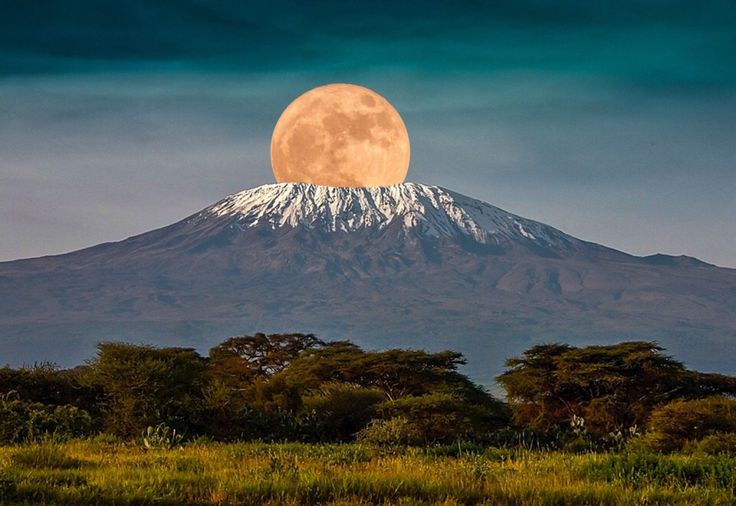
The Lost Generation in Hemingway's The Snows on Kilimanjaro
The Snows on Kilimanjaro, Ernest Hemingway's one of the most known novels, doesn't published as a book, first published in Esquire magazine in 1936, has a deeply individual narrative that reflects the emotional desolation, artistic failure, and existential crises experienced by the Lost Generation, the artists and creators who deeply effected by the World War I. The story centers and shapes around Harry, who once a great writer with great potential in his early life, but now on death bed because he got infected during his Africa visit. As he fades in his death bed, Harry faces with the many failures of his life: lost of his artistic talent, choosing comfort over creativity, and his broken bond with emotions. Through Harry’s internal reflections and external actions, Hemingway offers not only a personal confession series but also reflects us the conflicts and internal wars that post-war generation experienced. And in this essay, THe Lost Generation and the inner conflicts of post-war people had, will be examined through Hemingway's story and his modernist style by giving exact examples from the story.
This Lost Generation, is a term first popularized by Gertrude Stein and later used by Hemingway himself, first in The Sun Also Rises, refers to those who came of age during or after World War I and found themselves emotionally and morally damaged. The war cracked traditional values, disgraced religious and nationalist ideologies believed at the time, and left a hollow in its place. As Harry says in the story, “He had never written any of that because, at first, he had never wanted to hurt anyone.” This shows how emotionally he stuck, not only afraid of hurting other people, destroying their beliefs, but also he is too afraid to face the truth deep inside. Which as very common in his generation.
Paris in the 1920s became a gathering club for like Hemingway, F. Scott Fitzgerald, Ezra Pound, and others who wants do something, wants to find new meanings through art and literature and chooses self imposed banishment. In this context, The Snows of Kilimanjaro plays a role as both a critique and to exoress their sorrow and regret because of their failure to realize their ambitions. Harry is one such tragic figure among the expatriates, a man who let his creative fire die with the material pleasures. He wastes his talent, instead of create something meaningful through literature he choses worldly comfort and avoidance. “You kept from writing all these years,” he tells himself in the story. “And now you’ll never write the things that you saved to write until you could get them right.” He is aware of himself but it is too late to get a action, there is nothing left for him.
Hemingway’s use of flashbacks, a signature modernist narative style, deepens the psychological dimension of the story. These memories are not presented in chronological order and later gathering in a linear fragmentation, they just appear as reollection of his memories. This structure shows us Harry's fractured consciousness, whose sense of time and identity gradually fades. He recalls war experiences, a bohemian life in Paris, love affairs, and moments of artistic inspiration but not in the order he lived. The nostalgic, flashback- driven form allows Hemingway to show us the Harry's lively, full of energy past with the lifeless, dull of his dying present. One striking passage directly shows us: “He had traded away what remained of his life for security, for comfort too, there was no denying that, and for what else? For a steady diet of roast duck, fresh pineapple, and good red wine.” This critique is not just aimed at Harry, but at a broader cultural pattern, a society that traded its soul for material prosperity.
Harry’s relationship with Helen, his wealthy companion, explains this inner conflict. Though she is sympathetic, caring and loving, he casts his own self hatred onto her, holding her responsible for the fade of his artistic spark. “You are damn right I love you.” he tells her, “But not the way you want me to.” His harsh words masks a deeper emotional truth: it is not Helen who has failed him, but Harry who has failed himself. His hate toward Helen's wealth serves as a mirror of his self hatred onto himself, and the awareness of his personal failures. Their turbulent relationship actually shows the real gender and relationship dynamics of the Lost Generation, where men constantly project their own frustrations and self hatred onto women, using them as scapegoats to escape their deeper crises inside down.
Of course not only in the romantic relationships, Los Generation people had many conflicts in their friendship relationships. The Snows on Kilimanjaro ultimaletly shows us that friendship like truth and art, is another casualty of the Lost Generations's inner collapse. Even in the recollection of Harry's memories from Paris the tone is far far away from warmth and affection. Harry's relationships shown as functional rather than emotional also reflects the Lost Generation's pyschological detachment. While friendship is never one of the main themes, it is absence deeply felt throughout the narrative. His recollection of memories contains mostly acquaintances, war comrads, and lovers yet no mention of deep connected friends which is led us the early sentence in the up, his relationships are functional rather than emotional. Also shows the emotional desolation of postwar modernity. One memory involves a moment of moral courage during the war, “He had been the one who had saved the Austrian and got nothing for it except the knowledge that he had saved him and the something that he had paid to have the uniform cleaned.” this simple line reveals a blank kind of connection, where even a little moment of mercy fails to add emotional or relational depth.
Maybe alienation and isolation is the best themes of understanding Harry's chracter. Being physically isolated in the African wilderness, harry's gradually fading body reflects his emotional and spritual loneliness. Being all alone, away from meaningful connections and haunted by regret, he is left by his memories all alone, which does not give him any comfort and keeps deepen his sense of disconnection. This isolation reflects the postwar reality many of the Lost Generation writers faces. Who felt alienated from the society they live for their entire life, but now very strange, so they are unable to find the new meanings and purpose to live. The alienation and estrangement completely felt in those lines: "He was alone with nothing but memories and regret." captures the profound solitude of Harry's last moments.
The African landscape is also not a passive background in the story it is a strong symbolic arena for existential awakening. As Hemingway writes, “There was always the hyena… and he heard the hyena cry that meant death.” Africa’s harshness and remoteness strip away Harry’s illusions. Here, in the shadow of Kilimanjaro, he must confront his final reality. The mountain itself, described in the story’s begining as “as wide as all the world, great, high, and unbelievably white in the sun,” symbolizes spiritual and artistic transcendence, something Harry longed for but never achieved. The hallucination of being carried to its snowy peak of Kilimanjaro symbolizes a final dream of redemption. Yet Hemingway does not offer a clear ending. Was it a real salvation moment or just a dying regretful man's fantasy? That uncertainty keeps the story emotionally powerful and true in its modernist style borders, where answer are never simple and easy to find and meaning remains unclear.
Hemingway’s prose style, short and direct, ads to the story's sense of uncertainty. Hemingway’s “iceberg theory” is clear here: what’s left unsaid matters most. The line “He had never written any of that because at the time he had never wanted to hurt anyone” says little on the surface, but it points to his guilt, fear, and artistic failure.What Hemingway does not say, what he merely implies, brings a sharp, unforgettable emotional intensity to the narrative.
The presence of the hyena in the story's closing moments brings this uncertainty to a chilling climax. While Harry dreams of flying over the mountains, Helen wakes to find his body lifeless, and hears the hyena's laughter. “Outside the tent the hyena made a noise that sounded like a human being crying.” This unrealistic dreamlike ending, leaves us with the real tension between death and searching meaning for life, it is a something that mostly founded in Modernist Novels.
In Helen, we find another face of Hemingway’s portrait of loss. Though she is less developed than Harry, she shows great compassion and strength. She stays with Harry even though he pushes her away, and treated her unfairly. Also her calm presence is a contrast to regret and self-hatred. Through their relationship, Hemingway not just explores their personal struggles, but also explores the big fear of being close to someone, and letting ourselves be emotionally open to others after post war world, in the Lost Generation.
Ultimately, The Snows of Kilimanjaro is more than a story of personal failure, it is a didactic tale for an entire generation. Harry’s existential crises and awakening mirrors the larger sense of disappointment felt by those who survived the war but struggled to find a meaning and live peacefully. The story both critiques personal, inside failures and a society that no longer values truth in art, feeling, religion or ethics. Losing those themes brought us Harry's strugles with societal masculinity and identity reflects the dejection of the society and gender roles of before war. Harry's bitterness toward his wife Helen and his own sense of failure caught between his lost ambitions and the comfortable life he chose instead. His behavior's toward Helen is a much a reflection of his innerself as it is criticism of her; "You were too confused in your values..." This line reflects Harry's conflicted sense of masculinity, where strenght and creativity are tied to authenticity and purpose, qualities he feels he has betrayed. Hemingway uses Harry's identity crises to explore and show how the Lost Generation struggled with redefining what it meant to be a man in a world that no longer honored the old ethics.
Another main theme exmained in the novel, maybe it can be considered as summary, is artistic failure like we mentioned from the beginning. It is expressed through Harry's existential crises and deep regret which causes him to abandon his writings. For Hemingway and the other Lost Generation writers, the tension between art and survival was really painful. Harry was once a talented writer with passion to write about the truth of life, his experiences in war, love and poverty, yet he never accomplishes his wishes and he just let it waste. As his death comes, he is forced to confront with his failure. As he comes to the end, we see unfulfilled, wasted life as he realizes it too, he also know that his talent dies with him. He failed. Maybe he escaped from it for half of his life, but at the end he is al alone with himself and with his failures.The story becomes a advisory story which shows what could happen when one turns his back to his talent and the hollow left behind his soul. For the Lost Generation, many whom turned into art to make sense in a chaotic world like this, the fear of wasting one's voice or selling out to materialism was deeply resonant. Through Harry, Hemingway is actually paints a painful picture of what is lost when the calling to create is ignored, when someone faded away with broken soul.
As a literary artifact, The Snows of Kilimanjaro continues to related to society because it asks the timeless questions: What does it mean to live truthfully? How do we reconcile artistic ambition with everyday reality? What is lost when we sacrifice passion for comfort? Hemingway does not offer easy answers. Instead, he gives us a deeply introspective narrative that forces both character and reader to confront these questions in the harsh light of mortality.
In conclusion, Hemingway’s story endures not simply as a tragedy, but as a profound meditation on identity, memory, and creative failure. Through the character of Harry, he dramatizes the central conflict of the Lost Generation, the desire to create something meaningful in a world that often denies meaning. Told in clear, simple language and timeless existencial questions, the Snows on Kilimanjaro powerfully explores the struggle to find meaning in a world full of disappointment. Hemingway, as a Lost Generation writer, uses modernist chracteristics to show the world and the next generations, how was being left in a world after war. Without everything they believed, with many things new. To show the whole generation's worries and existencial crises he uses his story. And with that an oppurtinity to know how was the world after the world wars, and how it affected to the people, the creative artistic people is shown.

